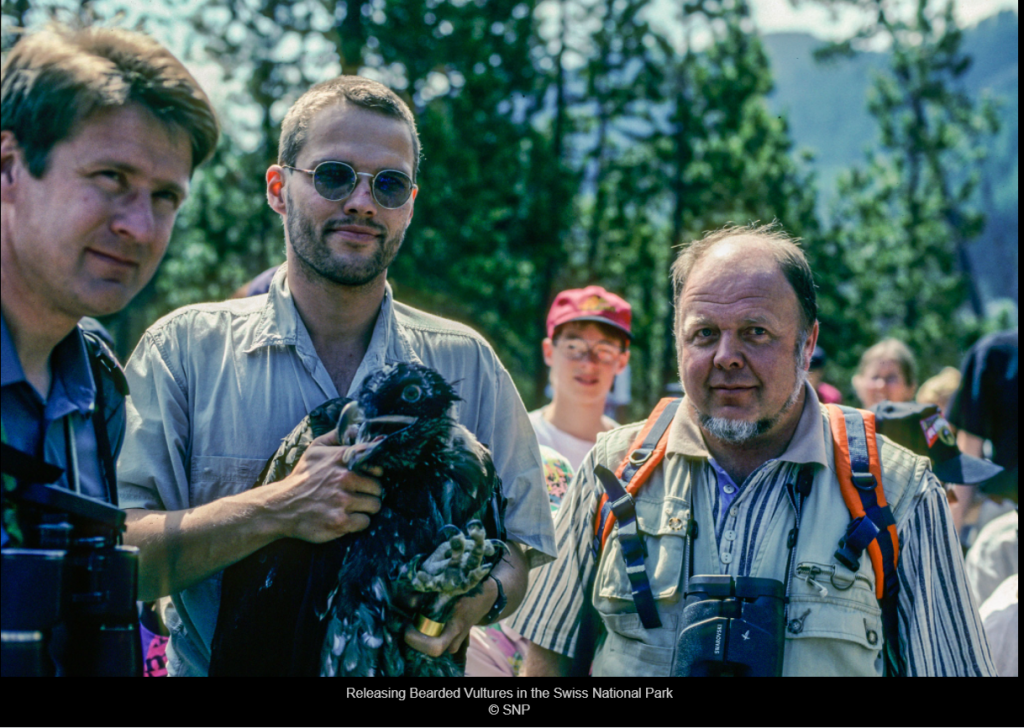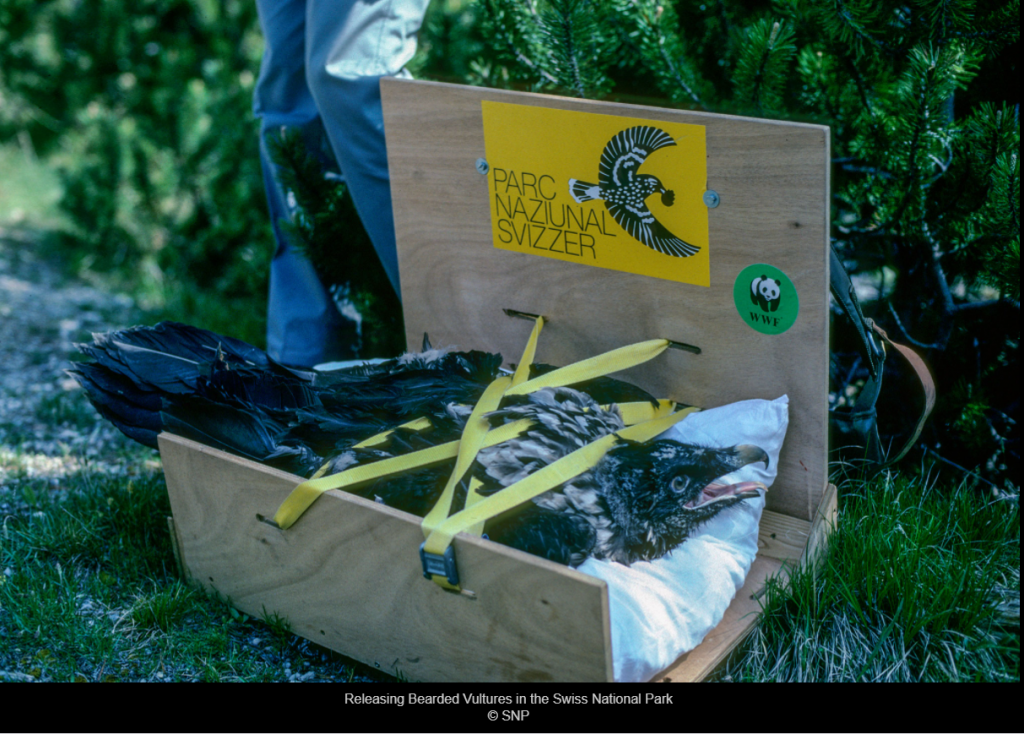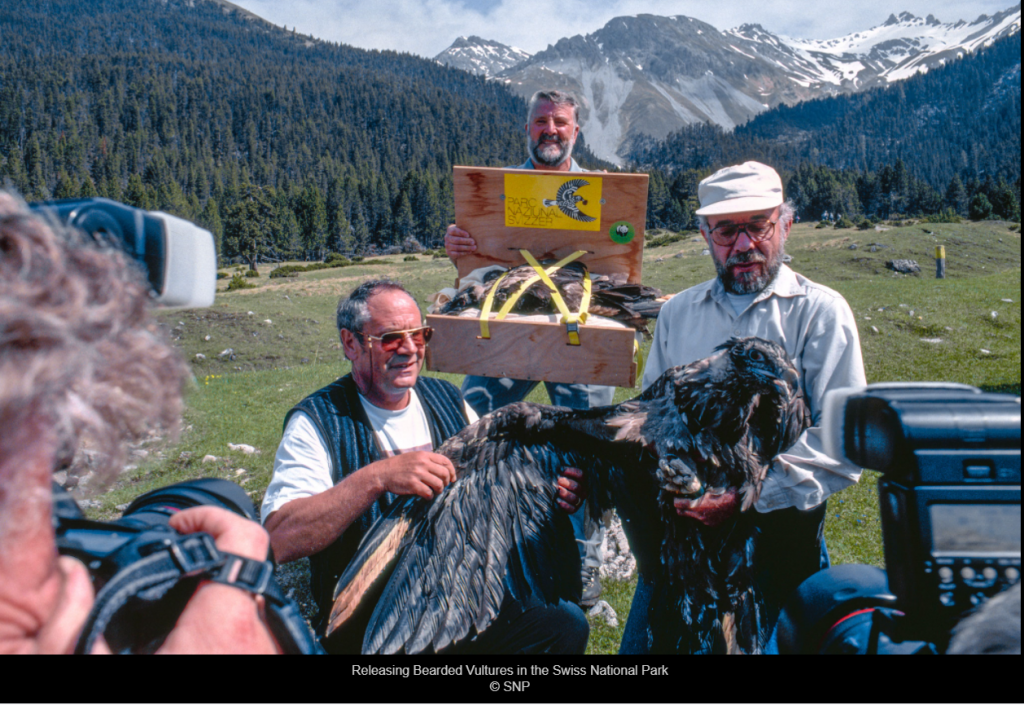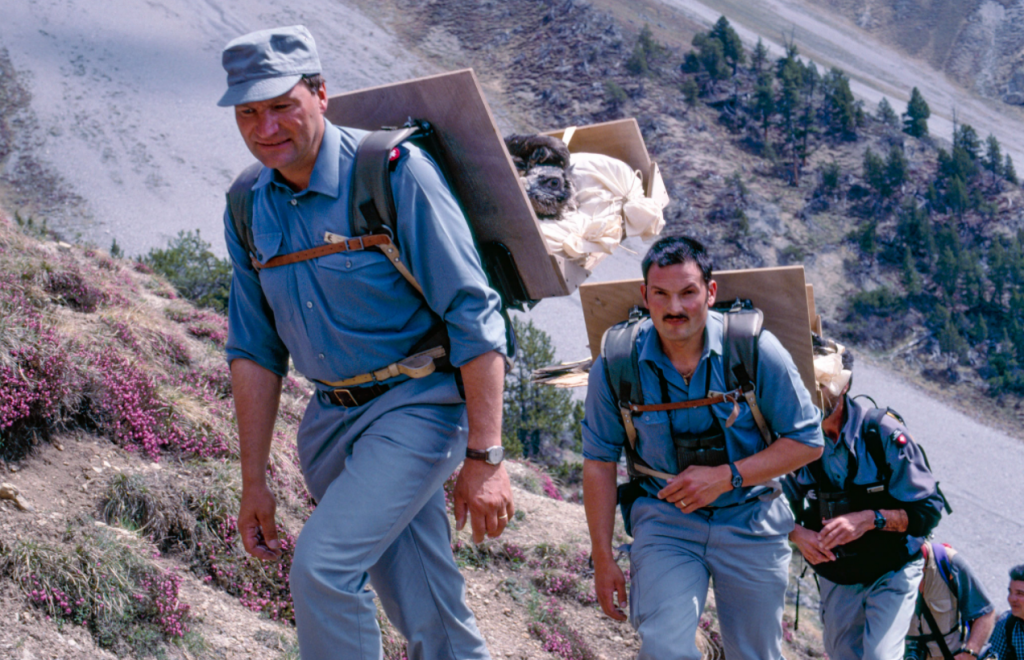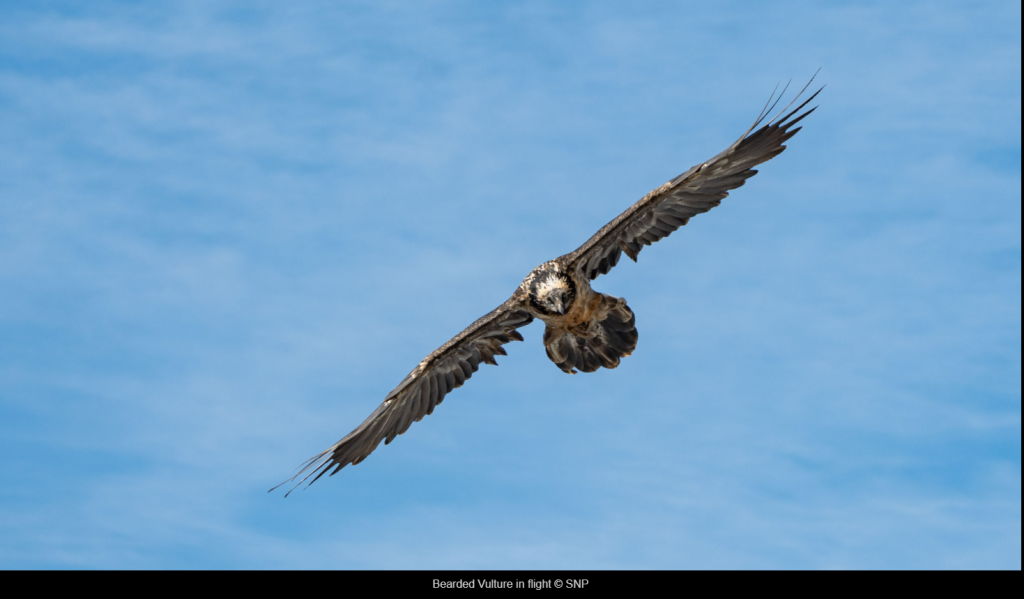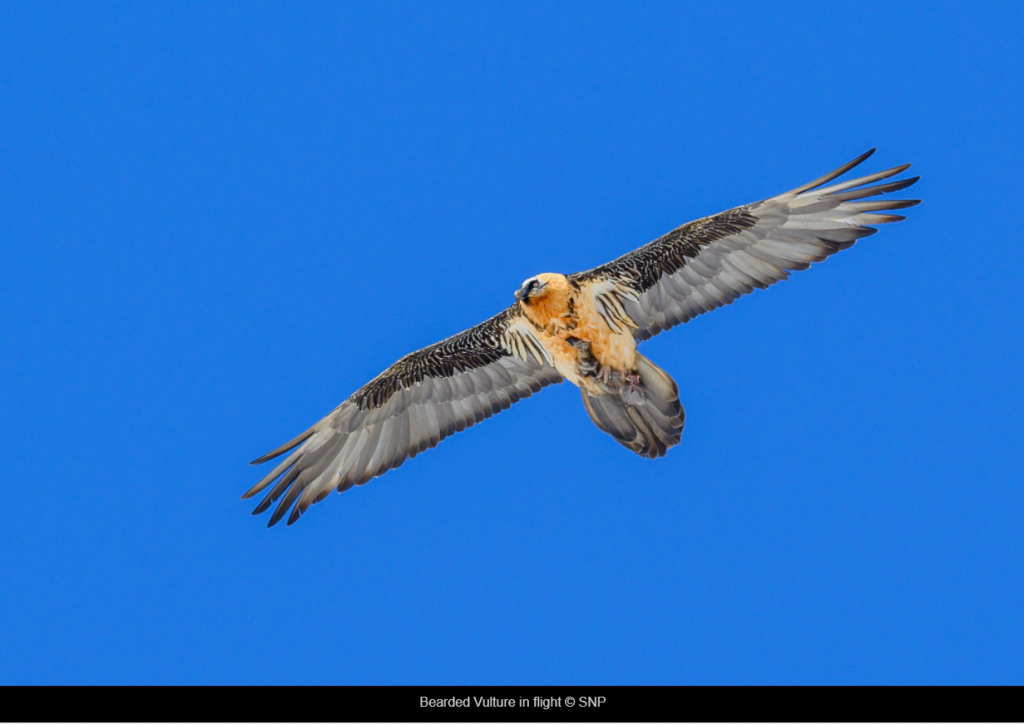
30 years ago today, on 5 June 1991, the first Bearded Vultures were released into the wild in the Swiss National Park (SNP). This marked the beginning of the successful return of the Bearded Vulture in Switzerland as part of the Alpine Reintroduction project. Since then, the National Park region has become a hotspot in the Alps for the species, much to the delight of locals and visitors alike. In the rest of Switzerland, too, the Bearded Vulture population is developing very positively thanks to the reintroduction programme led by Stiftung Pro Bartgeier (SPB) and the Bearded Vulture Captive Breeding Programme that provides birds for release, which is coordinated by the Vulture Conservation Foundation (VCF).
5 July 1991 – a historic day!
On 5 June 1991, after years of preparation, the first Bearded Vultures named Settschient, Moische and Margunet arrived in Zernez. They hatched in breeding stations in Vienna and Berlin and as young vultures were ready for release into the wild in the Val da Stabelchod in the Swiss National Park (SNP). The public showed great interest in this special event and there was a real festive atmosphere. A large group of interested witnesses accompanied the park rangers who transported the birds on Tragräfs to a rock niche high up in the valley.
A wildlife conservation success story
This was the beginning of region-wide successful reintroduction efforts. However, at the beginning of the project, it was uncertain whether it would actually succeed. In the past, the Bearded Vulture had a bad reputation: people falsely thought it hunted lambs and even young children! But that was far from the truth. As scavengers, the species does not hunt live prey, but rather feeds on carcasses, and most of its diet consists of 80 to 90% of bleached carcass bones. However, its bad reputation led to the species demise in the Alps as it was mercilessly hunted and poisoned to extinction, with the last individual shot in 1913 at Aosta Valley. When the reintroduction project started, the Bearded Vulture was extinct for many decades. Since the species successfully breed when they reach around 8-10 years old and only raise one chick per year, reintroducing it back to the wild would prove a long journey. Still, thanks to an elaborate international breeding and reintroduction project did it find its way back to its original home.
The Bearded Vulture hotspot in the Alps
The SNP is a wilderness area that offers an optimal habitat for the species. By 2007, a total of 26 Bearded Vultures had been released in the Park, and in 2007, the first pair successfully bred in Val Tantermozza. In the meantime, there are three more pairs that regularly raise their young in the Spöltal, the Val Müschauns and the Val Foraz. This means that the Grisons-Italy border region has developed into a real Bearded Vulture hotspot. To date, 23 breeding pairs have raised a total of 129 chicks in this region, which corresponds to 42 per cent of the chicks hatched throughout the Alps. There are several reasons for the attractiveness of this region. On the one hand, the bone-eaters find enough hoofed animal carcasses in this area. Secondly, the geology with the craggy dolomite rocks offers many opportunities to establish nests. And last but not least, humans have developed a positive attitude towards the Bearded Vulture, which protects the birds very well from being shot or poisoned.
Further releases boost the Bearded Vulture population
The development of the bearded vulture population is very encouraging. Today, around 300 Bearded Vultures live in the Alps and most of the young animals now come from wild families. However, the genetic diversity in the reintroduced population is still very low. Therefore, the Bearded Vulture Captive Breeding Network, coordinated by the VCF on behalf of EAZA‘s EEP for conservation purposes, continues to provide young individuals to SPB for their release in strategic locations. Since 2015, these actions have taken place in the Huetstock wildlife sanctuary near Melchsee-Frutt in the canton of Obwalden. This year, the release of two young vultures from the international breeding programme will take place at the end of June using the hacking method. A team of SPB will feed and monitor the young birds without any human contact until they are independent. During the summer, interested people can get information about the project and observe the young vultures at the information stand of our partners Stiftung Pro Bartgeier.

